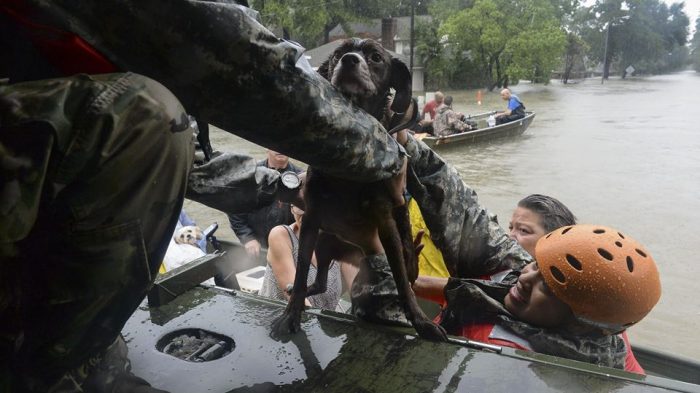Uniting for Animals: New Initiative to Fund Disaster Response Efforts
When disaster strikes, animals are often an afterthought for those in philanthropy. However, for many people – especially those in a disaster area who may have lost all else – pets are a lifeline, serving as vital sources of companionship and affection. A Wall Street Journal article on animal rescue efforts following the tsunami and […]

When disaster strikes, animals are often an afterthought for those in philanthropy. However, for many people – especially those in a disaster area who may have lost all else – pets are a lifeline, serving as vital sources of companionship and affection. A Wall Street Journal article on animal rescue efforts following the tsunami and earthquake that struck Japan in March 2011 quoted the head of Animal Friends Niigata as saying, “We should not forget [that] animals do provide mental support … Some people lost everything, from their families to their house, and are left with nothing but their pets.”
The human-animal bond can be so strong that when facing a disaster, people sometimes refuse to evacuate their homes without their pets, putting themselves and emergency responders in danger. Taking this into account, government agencies are increasingly prioritizing the inclusion of pet-related considerations in emergency planning.
Hurricane Katrina was a major catalyst in this prioritization. The Pets Evacuation and Transportation Standards Act was passed in the year following Katrina, requiring that state and local governments address the needs of citizens with household pets and service animals following a major disaster or emergency.
Katrina also opened the eyes of grantmakers to the impact a disaster can have on animals and pet owners and the tremendous resources involved in assisting them. In the aftermath of Katrina, the American Society of the Prevention of Cruelty to Animals (ASPCA) gave more than 600 grants for pet recovery and reunification efforts, ultimately contributing more than $13 million to help pets and pet owners in Gulf Coast communities. The need for funding on a local level was monumental and immediate. We lacked the capability to get the funds into the hands of local groups fast enough.
Now, the ASPCA is teaming up with other major grantmakers of the animal welfare world to make it faster and easier for local groups to get the funding they need in the aftermath of a disaster. Disaster-impacted animal welfare groups can now submit one grant application through a centralized website—animaldisasterfunding.org—for prospective joint review by the ASPCA, Petfinder Foundation, and (for disasters affecting Colorado) the Animal Assistance Foundation.
Our hope is that this streamlining of the grant application process will allow animal welfare groups more time to focus on assisting impacted animals and their owners and less time worrying about where the funding will come from. There is perhaps no greater argument for the importance of philanthropic effectiveness than the desperate needs – both human and animal – that arise from major disasters.
Grant applications will be determined and activated on a case-by-case basis by the members of the collaborative. Since participating grantmakers can opt in and out of the collaborative during different disasters, the makeup of the review committee will shift depending on the circumstances and the affected communities.
Over time, we expect to grow the group of funders to include other animal welfare grantmakers and, ideally, community and family foundations serving disaster-affected regions. We will be learning as we go—this is an innovative development not only in animal welfare, but also in the broader field of philanthropy.
While funders have long been urging their grantees and applicants to work together in addressing large-scale problems, the strategy has been less commonly used by grantmakers themselves. Funding jointly can maximize the impact of grants, avoid duplicative support, fill service gaps, and streamline the grant application process for applicants already stretched too thin by the immediacy, intensity, and volume of their work. GrantCraft, an online portal dedicated to helping grantmakers work more effectively, offers a guide focused on funder collaboratives as well as tools to facilitate collaboration.
Disaster grantmakers can improve the outcomes of their grants by asking their own grantees if pets are part of their disaster plans, by granting to animal organizations that assist pets in disasters, and by facilitating collaboration among nonprofits whose constituencies may differ, but whose missions overlap.
As the ASPCA’s Vice President of Grants Management, Michael Barrett, stated in his Philanthropy New York blog post, Why Helping Pets Helps People, “the question of whether or not a funder grants to animal welfare or human welfare is irrelevant. What may seem like a choice between pets and people is really just an invitation to embrace the programs that leverage the bond that so powerfully impacts them both.”
More like this

How Black History Has Influenced Disaster Planning

